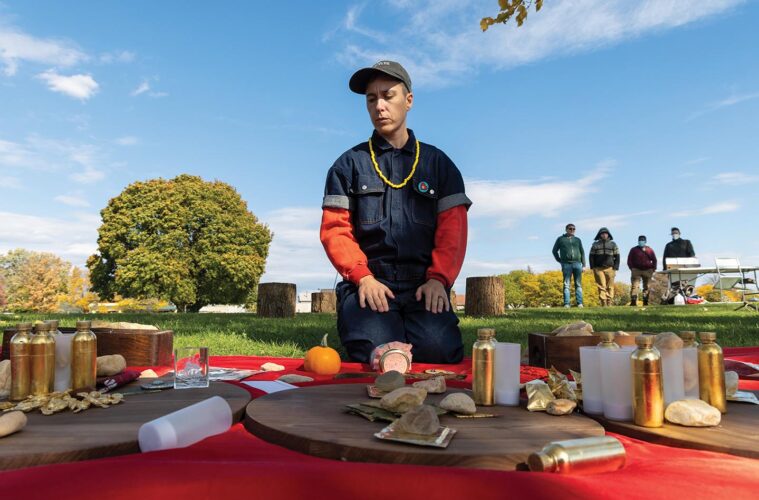The workshop began with simple breathing exercises. More than 20 students and faculty and staff members stood in a circle, gazing at each other above their masks. Inhale. Bring the hands up in front of the body. Exhale. Lower the hands. Visiting artist devynn emory led the synchronization of breath through the movement of the hands and arms. Soon, the group was breathing as one. With a background in dance, choreography, holistic healing, and Western medicine, emory embodies a rare space at the junction of art, ancient knowledge, and modern medicine.
In the fall of 2022, emory, who uses they/them pronouns, completed a visiting artist residency at Colgate through a collaboration between the Colgate theater department and SUNY Upstate Medical University. In addition to the workshop, “land somatics: moving grief and re-connecting,” there was a screening of the short film deadbird. Because emory is a registered nurse, they made this film inspired partly by the medical mannequins they learned from in nursing school, and partly by their experience providing end-of-life care during the early months of the COVID-19 pandemic. The residency culminated in “can anybody help me hold this body,” a public grief altar project accompanying the film as it is screened across Turtle Island (North America).
“In my Indigenous lineage, change, which is death, is very common; it is an honor, and change is all around us,” says emory. “I wanted to create a space for us to be in conversation about death before the moment of crisis, which is where I often see it in the Western medical setting at the bedside.”
In the workshop, breath and movement are used to process grief. emory lost both of their grandmothers to COVID-19, and their time working as a nurse during the pandemic made them witness to many deaths. In an effort to process these losses, emory turned to their roots in dance and holistic medicine. This workshop is a way of passing on the learning and release emory gained from those days of enforced social isolation. “The masks are not only a practical defense against the spread of disease, they are symbolic of connection to others, even while they isolate and enclose us within the sphere of our own breath,” says emory.
Gentle music surrounded the group. Emory bid each participant to move in their own time, allowing their bodies to release their own unique expression of grief. Individual sequences of gestures developed, and were repeated. In pairs, the participants taught one another the patterns of their gestures and breath. Combining the sequences, each pair danced their mingled patterns for the surrounding circle.
devynn emory is a choreographer/dance artist, dual-licensed bodyworker, ritual guide, medium, and registered nurse — practicing in the fields of acute/critical care, hospice, COVID-19, and integrative health in New York City.

